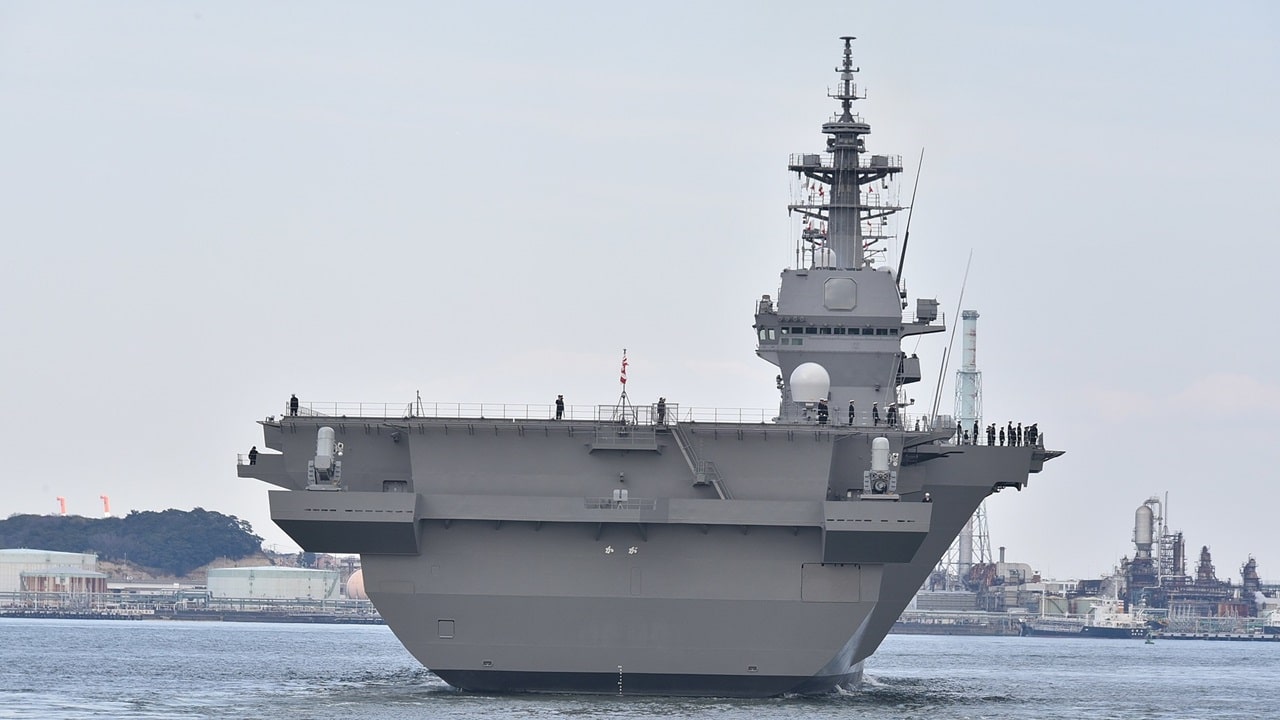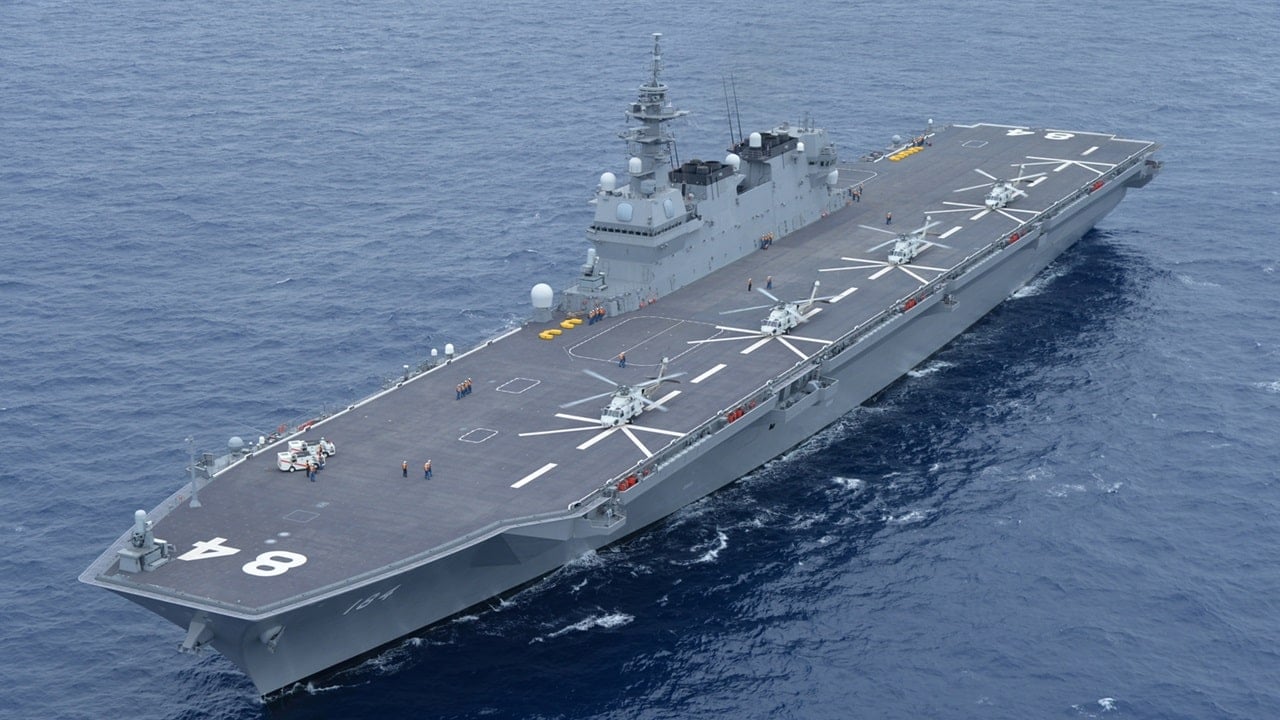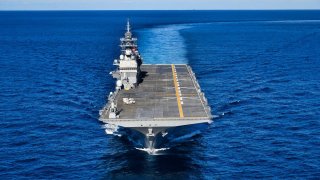Japan Sent Its 'Aircraft Carrier' Armed with F-35 to America for War Training
The Japanese Maritime Self-Defense Force's helicopter destroyer JS Kaga (DDH-184) arrived in San Diego shrouded in dense fog, marking the start of F-35B Lightning II training operations with the U.S. Navy.
What You Need to Know: The Japanese Maritime Self-Defense Force's helicopter destroyer JS Kaga (DDH-184) arrived in San Diego shrouded in dense fog, marking the start of F-35B Lightning II training operations with the U.S. Navy.

-The vessel will undergo assessments to optimize operations of the short take-off and vertical landing (STOVL) fifth-generation fighter, with tests running until November 18, 2024. This is Kaga's first deployment since modifications to operate F-35Bs, including a redesigned bow akin to U.S. amphibious assault ships.
-Despite not officially labeling it an aircraft carrier due to pacifist constitutional policies, Japan's upgraded Kaga enhances its air capabilities in the contested East China Sea, drawing criticism from Beijing.
In what appeared almost like something out of a Hollywood movie, a massive aircraft emerged from a dense fog dwarfing smaller boats near the shore. This wasn't created by CGI, and instead occurred in San Diego last Saturday as the Japanese Maritime Self Defense Force (JMSDF) helicopter destroyer JS Kaga (DDH-184) arrived – where it will soon undergo F-35B Lightning II training operations with the U.S. Navy.
San Diego Web Cam shared the short video clip of the arrival of the Izumo-class flattop on X, the social media platform formerly known as Twitter. On Sunday, WarshipsCam posted photos of the vessel after the fog had cleared.
While in San Diego, JS Kaga (DDH-184) will undergo an assessment to determine how to best operate the short take-offs and vertical landings (STOVL) fifth-generation fighter. The tests have begun this week and will continue through November 18, 2024.
This marked the first deployment of JS Kaga since the warship underwent operations that will enable it to operate with the F-35B, the STOVL Lightning II variant.
"The trials will pave the way for increased interoperability with our allies," the F-35 Joint Program Office (JPO) announced.
Japan's First Aircraft Carriers Since World War II
As previously reported, the United States Marine Corps conducted STOLV exercises on JS Izumo (DDH-183) in October 2021. "U.S. Marines embarked aboard the JS Izumo and worked directly with JMSDF personnel as part of a bilateral effort to ensure the capability test was both effective and safe," the service announced at the time.
The JMSDF has operated the JS Izumo and JS Kaga multi-role flattops since 2013 and 2015 respectively. Throughout their service to date, the two warships may resemble modern aircraft carriers but were officially described by Tokyo as a "multi-purpose operation destroyer" due to their main purpose being to seek out and destroy enemy submarines in the self-defense of Japan.
In 2018, Tokyo approved a plan that would greatly enhance the capabilities of the warships – transforming them into de facto aircraft carriers. Each of the vessels has already begun a two-stage transformation that will allow them to operate fixed-wing aircraft – notably the F-35B Lightning II.

JS Izumo underwent its initial modification stage, which included the application of heat-resistant paint to its flight deck, while JS Kaga has seen the modification of its bow section that has earned comparisons to the U.S. Navy's Wasp-class and America-class amphibious assault ships. Both of the classes of assault ships also operate with the F-35B.
Despite the modifications to its helicopter destroyers, Tokyo remains cautious in its exact terminology, refraining from explicitly labeling the modified Izumo-class vessels as aircraft carriers. That decision aligns with the nation's long-standing defensive security policies under the pacifist constitution, which was adopted after the Second World War. It did require some "reinterpretation" of the constitution's Article 9 – allowing Japan to exercise the right of "collective self-defense," and to engage in military action if one of its allies were to be attacked.
The converted warships could greatly enhance the JMSDF's ability to carry out air operations in the contested East China Sea – a move that has earned condemnation from Beijing.
Author Experience and Expertise: Peter Suciu
Peter Suciu is a Michigan-based writer. He has contributed to more than four dozen magazines, newspapers, and websites with over 3,200 published pieces over a twenty-year career in journalism. He regularly writes about military hardware, firearms history, cybersecurity, politics, and international affairs. Peter is also a Contributing Writer for Forbes and Clearance Jobs. You can follow him on Twitter: @PeterSuciu. You can email the author: [email protected].
Image Credit: Creative Commons and/or Shutterstock.


